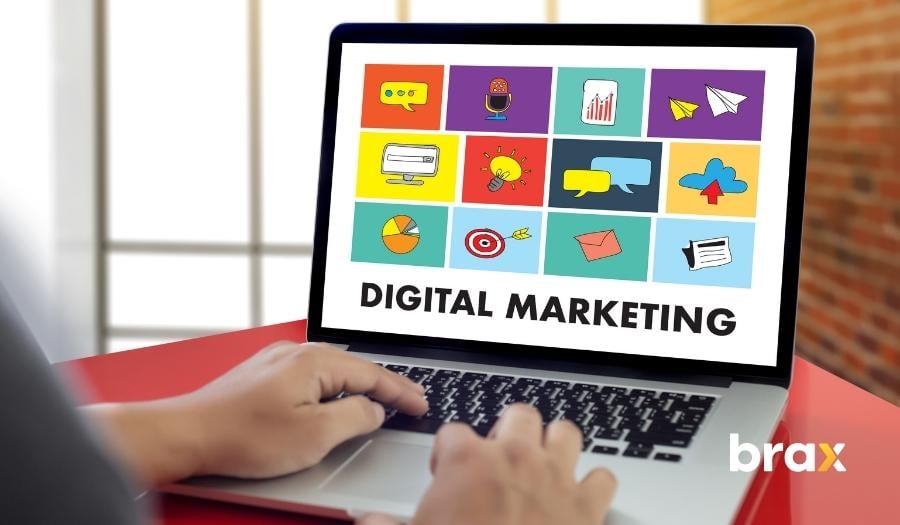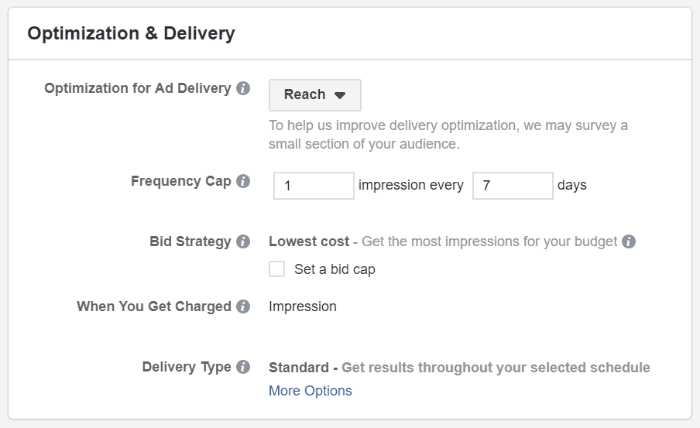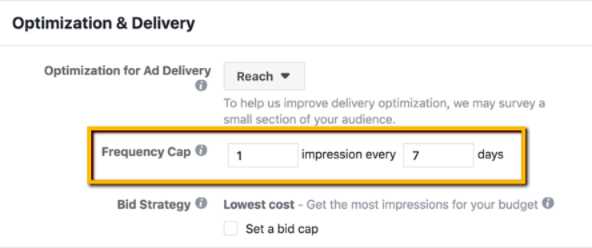In today's saturated market, it's more important than ever to make sure your marketing strategy is on point. And a big part of that is frequency: how often you reach out to your target audience can have a big impact on your overall success.

If you're not careful, you can end up bombarding them with too much information and driving them away. On the other hand, if you're not reaching out enough, you run the risk of getting lost in the shuffle. That's why it's so important to find the right balance.
Maximizing your frequency is key to capturing the attention of your audience and keeping them engaged. But how do you know how often is too often? And what are the best ways to reach out? These are all important questions to consider as you develop your marketing strategy, and we will answer these in this article.
What do you mean by repetition in advertising?
When most people think of repetition in advertising, they think of the same commercial being played over and over again on television. However, repetition can also refer to the use of similar slogans, images, and even music across different mediums.
Repetition in advertising is the process of repeating a message multiple times in order to increase brand awareness and consumer recall. While it may seem like a simple concept, repetition can be an incredibly powerful tool when used correctly.
Any seasoned salesperson will tell you that repetition is key when it comes to making a sale. After all, it's been said that people need to hear something seven times before they take action. So, if you're looking to increase your sales, start by repeating your offer.
You can use different channels to reach them, such as print ads, TV commercials, online ads, or even word-of-mouth marketing. The more times they see and hear your offer, the more likely they are to take you up on it.
How can repetition improve customer response?
There are a few different ways that repetition can improve customer response. Let's discuss the top benefits of using repetition in advertising:
1. By Building Familiarity and Trust
The purpose of repetition is to create a sense of familiarity and trust with potential customers. Studies have shown that the average consumer needs to see a message several times before they take notice, and even more before they remember it.
Seeing the same ad over and over again creates a sense of familiarity, which can lead to potential customers feeling more comfortable doing business with you.
2. For Brand Awareness and Recognition
Additionally, repetition can help to build brand recognition and ensure that potential customers are able to quickly identify a company’s products or services.
The more people see your ad, the higher the chances they'll remember your brand. And if they see your ad enough times, they might even start to recognize your brands without even seeing the product itself. That's the power of repetition!

3. For Brand Loyalty
When you see or hear something multiple times, it starts to feel like part of your everyday life. And when something feels like part of your everyday life, you're more likely to develop a positive association with it. That's why companies often use repetition to build brand loyalty — the more times you see or hear their name, the more likely you are to become a loyal customer, even without you knowing it.
4. To Initiate Word-of-Mouth Marketing
When people see an ad multiple times, they're more likely to talk about it with their friends and family members. This is especially true if there is something exciting, funny, or mysterious about your ad.
5. For Positive Association
Repetition helps to create an emotional response. Ads that elicit an emotional response are more likely to be memorable and persuasive. And while it's possible to create an emotional response with a single exposure, repeated exposures can help to intensify the effect.
Therefore, this strategy creates a positive association with your brand. If people see your ad often enough, they might start to associate your brand with positive emotions like happiness or excitement.
6. For Better Understanding of the Message
Repetition helps viewers understand the message. Have you ever seen an ad and felt so confused afterward that you actually want to see the ad again just so you can get your closure?
Ads are often designed to convey complex information in a short amount of time. By repeating the ad, viewers have a better chance of understanding and internalizing the message.
7. To Increase Sales
Repeat customers are the bread and butter of any business, so it stands to reason that increasing sales starts with increasing repeat business. And what's the best way to encourage repeat business? That's right, repetition!

Every time a customer comes through your door (or clicks through your website), they should be greeted with a consistent message, friendly service, and high-quality products. It might seem like a lot of work to maintain this level of consistency, but the payoff is well worth it.
Customers who feel like they can depend on your business are much more likely to become loyal, lifelong fans.
So go ahead and start repeating yourself — your bottom line will thank you for it!
How can repetition negatively affect marketing?
As always, there are two sides to a coin.
Of course, there is such a thing as too much repetition. We cannot deny that all of us have experienced being annoyed over an ad or a commercial that we've seen a hundred times, to the point that we build a negative association with it.
If an advertiser bombards consumers with the same message over and over again, they risk turning them off entirely.
The key is to find a balance between repetition and variety. By mixing up the mediums used, the frequency of the messages, and the content of the message itself, advertisers can keep their audience engaged while still achieving their objectives.
What are some ways to achieve repetition?
Just as Rome wasn't built in a day, a successful marketing campaign takes time, effort, and a whole lot of repetition. The goal of repetition is to embed the message into the minds of the target audience so that it becomes top-of-mind when they are making purchasing decisions.
Let's talk about how you can apply these to your marketing.
1. Use multiple advertising channels.
Simply repeating the same message over and over again can quickly become boring (or irritating), both for you and your audience. That's why it's important to use multiple channels when you're trying to achieve repetition.
By varying the mediums you use — from television ads to social media posts to in-person events — you can keep your message fresh and avoid the eye-rolls that come with too much repetition. And while it may require a bit more work upfront, the payoff will be worth it when your message starts resonating with your target audience.
If you want to focus on digital marketing alone, you can replace TV commercials with YouTube and other video ads, billboard ads with banner ads, and in-person events with social media events and streaming.

2. Use the same tagline or slogan in all your marketing materials.
A good tagline or slogan can be memorable and help to create a connection with customers. But what's even more important is using that tagline consistently across all of your marketing materials. Using the same tagline or slogan in your ads, website, social media, and email campaigns will help to reinforce your message and build name recognition.
Plus, if customers see your tagline in multiple places, they're more likely to remember it the next time they need your product or service.
Just do it!
Oh wait, that's someone else's tagline! See what I mean? You know who I'm talking about automatically.
3. Mention your product or service in most ads, blog posts, or social media updates.
This may seem like a lot of work, but it's the only way to ensure that your target audience will see your message often enough to remember it. Of course, there's a fine line between repetition and overkill, so it's important to strike a balance.
4. Create a recognizable logo or icon that you can use on all your collateral.
A logo is much more than just a pretty picture — it's an essential tool for any business looking to build a strong and recognizable brand. A logo helps customers quickly identify your company and its products or services, and it can be used across all of your marketing materials, from your website to your business cards to your social media profiles.
A well-designed logo will convey the essence of your brand and make a lasting impression on potential customers. Creating a recognizable logo is therefore an essential step in any effective repetitive marketing strategy.
While you want your logo to be eye-catching and memorable, it's also important that it be simple and easy to understand. The best logos are often those that are clean and minimal, using basic shapes and colors to convey their message. Keep in mind that your logo will be used in a variety of contexts, so it's important that it can be easily reproduced in different formats. By careful planning and execution, you can create a logo that will help take your business to the next level.
If you already have a logo and brand kit, just make sure to add them to your ads or posts.

5. Develop a catchy jingle or sound effect that you can use in your commercials and online videos.
One way to still keep people interested is by developing a catchy jingle or sound effect that you can use in your commercials and online videos.
This will help to grab people's attention and make your message more memorable. And because people are more likely to remember something that they've heard multiple times, using a jingle or sound effect can be a great way to achieve the repetition you need without driving yourself (or your audience) crazy.
6. Vary the delivery.
Simply repeating the same message over and over again can quickly become boring for both you and your audience. That's why it's important to find ways to mix things up while still achieving repetition. By changing the way you present your message, you can keep customers engaged and ensure that your repeated message packs a punch.
This could involve changing the wording, adding new images or video, or even modifying the overall tone of the ad. By varying your delivery, you can keep customers interested and ensure that your marketing efforts are as effective as possible.
7. Increase the impression or click frequency in ads.
Many advertising networks know how important setting the frequency is with ads, which is why many of them offer this option.
(Frequency capping in Facebook Ads/Meta Ads)
What is Ad Frequency?
Ad frequency is simply the number of times an ad is shown to a particular user for a specific time period. This is also called Frequency Capping.
For example, if a user sees an ad three times in one day, the ad's frequency would be said to be three. Generally speaking, the higher the frequency, the more likely it is that the user will take notice of the ad and perhaps even take action.
Why does Ad Frequency matter?
Ad frequency is important because it can have a direct impact on conversions. Studies have shown that increasing ad frequency can lead to more clicks and more purchases. That's why many businesses focus on ensuring that their ads are seen by as many people as possible. Again, repetition!
How often should your customers see your ads?
There's no single answer to the question of how often you should run your ads. The frequency with which you should show your ads depends on a number of factors.
However, there are a few general guidelines that can help you determine the right ad frequency for your business.
-
Based on the goal or purpose of the ad
First, think about why you're running ads in the first place. Are you trying to increase brand awareness? Generate leads? Make sales? Once you know your goal, you can start to calculate how often your ad should run.
For example, if you're hoping to increase brand awareness, you'll want your ad to run more frequently so that people see it multiple times. On the other hand, if you're focused on generating leads or making sales, you may only need to show your ad a few times before someone takes action.
This is the reason why advertising platforms ask you for your goal first, so they will know the ad frequency to suggest based on your objectives and targeting settings.

-
Based on the estimated audience reach and target
Next, do a little math to get an estimate of how often your ad should run. The general rule of thumb is that your ad should reach 80% of its audience in 4 weeks. So if you have a daily budget of $10 and you're hoping to reach 1,000 people, your ad should run at least once every day for 4 weeks.
Of course, this is just a starting point — you'll still need to test different frequencies to see what works best for your business.
You can also get started by showing people your ads a maximum of three times a day. This ensures that people have a chance to see your message and remember it when they're making a purchase decision.
However, if you're targeting a large audience or running a very expensive campaign, you may need to increase your ad frequency to reach your desired results.
-
Based on the Nature or Type of Offer
Another important factor to consider is the type of product or service you're advertising. For example, if you're selling a new product, you'll likely need to run your ads more frequently than if you're promoting a well-established brand. This is because people are less familiar with new products and need to see them multiple times before they're ready to make a purchase.
Also, if you're promoting higher-priced products, it would be best to lessen the frequency but improve the marketing funnel.
-
Based on your budget
Keep an eye on your budget when setting ad frequency. You don't want to overspend on your campaign and end up running too few ads. On the other hand, you also don't want to under-invest in your campaign and miss out on potential sales.
Finding the right balance will take some trial and error, but it's important to keep this factor in mind as you determine how often to run your ads.
-
Based on the results of your initial test
Start testing ads!
Try running your ad more or less often and track how it affects your results. If you're not seeing the results you want, experiment with different frequencies until you find something that works for you.
Remember: there's no magic number when it comes to ad frequency, so don't be afraid to try something new.
The most important thing to remember when testing ads is to monitor their performance properly. And you can only do that with the help of a reliable tracking platform like Brax.
Brax allows you to manage an optimize native ads and social media ads in one platform. You can see the trend of the campaign's performance over time, you can compare one campaign with another, and you can even create multiple ads from within the dashboard in just a few clicks! This means you can split-test campaigns with different frequencies as often as you like.
If you'd like to see how Brax can help you with your digital marketing goals, book a demo today! It's free, with no strings attached, so you've got nothing to lose.
Wrapping Up
Repetition isn't just about how often a particular ad is shown — it's also about the message itself. In order to be effective, an ad must be able to break through the clutter and connect with its audience. How can you do that?
And one of the best ways to do that is to keep the message simple and easy to remember. That's why you'll often see ads that use catchy jingles or memorable slogans. By repeating these elements over and over again, advertisers hope to embed them in our subconscious minds so that even when we're not actively watching TV, we're still seeing their ads in our heads.
Ultimately, repetition is a necessary component of any successful advertising campaign. By repeating their message multiple times, advertisers can ensure that their target audience will take notice and remember their product when they are ready to make a purchase.


